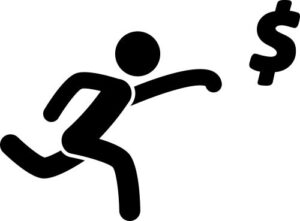Can We Stop the “Chase” in Our Used Vehicle Pricing?
As I talk to dealers week after week about their aged and distressed inventory, it doesn’t take long to uncover a distinct pattern: Someone is pretending the vehicle deserves a shot to make gross despite all signs suggesting otherwise.
I see the pattern in the inventories of ProfitTime GPS dealers,  where the system recommends a move-it-quick pricing recommendation on Day 1 for a Bronze vehicle (i.e., a unit with the least ROI or profit potential). Even so, the vehicle’s been priced significantly higher than the recommendation, either becomes someone didn’t see or ignored it. We all know what happens next. The vehicle doesn’t sell. After 30 days or more, someone finally decides to price the vehicle to move. Unfortunately, by this time, the price required to move the vehicle results in a low-gross or net loss when it sells.
where the system recommends a move-it-quick pricing recommendation on Day 1 for a Bronze vehicle (i.e., a unit with the least ROI or profit potential). Even so, the vehicle’s been priced significantly higher than the recommendation, either becomes someone didn’t see or ignored it. We all know what happens next. The vehicle doesn’t sell. After 30 days or more, someone finally decides to price the vehicle to move. Unfortunately, by this time, the price required to move the vehicle results in a low-gross or net loss when it sells.
The other day, a friend observed that the behavior of pricing a vehicle that’s in distress as if it isn’t in distress is the equivalent or at least a close cousin of the “chase” in poker. That’s where a player has a weak hand and believes they can improve it through subsequent draws and bets. By the time the dealing’s done and the cards are on the table, the player would have been far better off if they had folded right away, and didn’t pretend their hand was something that it wasn’t.
The problem with used vehicle pricing and poker is that both have been built on the tempting prospects of hope and possibility. With a used vehicle, you might get lucky and find a buyer willing to pay more than the vehicle’s worth. In poker, you might get lucky and land the card that turns a weak hand into a winner.
As humans we’re wired to remember the situations where a positive outcome, either in used vehicle or poker, defied the odds—which is exactly why we seem so ready and willing to defy them again, even if the evidence in front of us indicates the outcome won’t be good.
My next book, Invested: The New Science, Strategy and System of Used Vehicle Investment Management, discusses how the long-standing beliefs and biases of used vehicle managers continue to contribute to sub-optimal profit or ROI outcomes for dealers. It highlights how it’s often difficult for dealers and their managers to accept that pricing a vehicle for a loss on Day 1, the equivalent to folding a weak hand in poker right away, is truly the best thing to do from an investment perspective.
The book also details what happens when you avoid the chase in used vehicle pricing. You sell your Bronze vehicles faster, typically for a higher gross or ROI than you’d achieve if you held them longer. Your overall volume improves because you’re not sitting on vehicles that are priced not to sell. In addition, your overall profitability improves because, as you move Bronze vehicles faster, there’s less need or temptation to short-sell your best cars (i.e., the ones ProfitTime classifies as Platinum and Gold) to achieve your volume targets.
The book will be available at the upcoming NADA convention in New Orleans. Until then, I’d suggest that dealers take a moment to see how often their used vehicle pricing amounts to a chase to achieve a result they’ll never realize. In the end, the faster you put an end to the chase, the better off your investment returns will be.
The post Can We Stop the “Chase” in Our Used Vehicle Pricing? appeared first on Dale Pollak.








